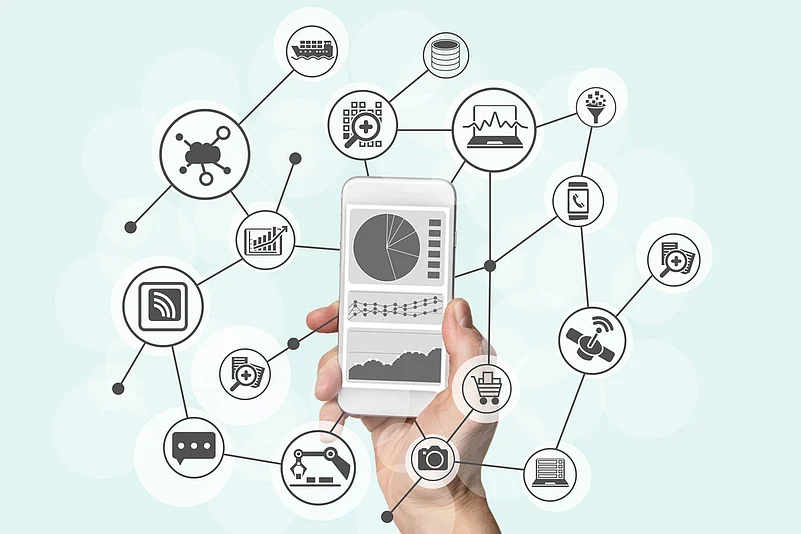Financial Inclusion has meant a lot of things to many people in the Financial Services industry. The Government and regulators reach out to the masses who do not have a bank account or access to organised lending at fair prices. For decades, India’s self-employed populace in under-served rural areas have struggled to be accepted by the financial system as stakeholders, and have been taken advantage of by money lenders and loan sharks.
Enabling Financial Inclusion through JAM
Over the years, the Banking system has made inroads with multiple branches and customer service points. Even though there are more than 11.7 lakh bank correspondents (BC) or customer service points across the country, and more than 5.5 lakh villages have access to them within a 5-kilometre radius, the infrastructure has proved to be inadequate quantitatively as well as qualitatively. It was only a decade back that the financial inclusion movement started picking up when each household had a Jan Dhan account, was registered on the Aadhar database and had access to a mobile phone popularly known as JAM.
Advertisement
Enabling Financial Inclusion through the Digital Bridge
While JAM was being rolled out pan-India, Aadhar and UIDAI became the fulcrum for paperless and cashless initiatives of all types of institutions which dealt with transmission of subsidies to the masses as well as financial services.
e-KYC is being used extensively by NBFC-MFIs and banks to onboard customers digitally and instantly. The biometric-based authorisation has become the norm for all types of loan applications and even for withdrawal of money from a kirana store, using the AEPS platform by NPCI (National Payments Corporation of India).
Digital bridge – Assisted Mode and Self-Use Mode
Advertisement
Mobiles have become a digital interface through which the bank representatives could assist a rural customer to join the financial inclusion movement for almost all available banking services. The local kirana store has become the digital connection between the banking system and the village. While the assisted mode of banking has been quite successful, the self-use model has enabled a convenient way of banking leading to an unprecedented spike in transaction volumes. UPI generated 2.76 billion transactions in FY21 and it will only keep increasing given the convenience it brings to customers.
Aggregators, Service providers, and Lenders
The kirana stores, retailers, petrol pumps and merchant establishments have almost all been onboarded by aggregators as transaction points. In urban and semi-urban areas, multiple aggregator companies offer the convenience of ‘cashless’ services to customers.
Most retailers and customers now have a digital footprint with the aggregators and service providers and the footfalls at these establishments are being captured in form of digital transactions
Technology for Onboarding and Making Inclusive Offers
Many aggregators or Fintech companies are using this footfall opportunity at commercial establishments & retailers to onboard potential customers through digital KYC. Using analytics, algorithms, and credit bureau data – fintech companies can classify customers into various categories of potential customers or leads for lending, insurance & deposits. These leads enable them to connect to the self-employed in urban and rural areas through suitable offers.
Advertisement
Journey to Financial Fulfilment
The digitisation of the microfinance industry is a successful example of financial empowerment through technology. It is a contact business where every week or fortnight a loan officer will meet a group of women for collections & new loan applications. The transactions that happened in cash and on paper took a rapid turn towards digital operations when MFIs decided to fully digitise their front-end process. Disbursements started going directly into Jan Dhan accounts making the process more efficient and increasing productivity. The gestation time between loan applications to disbursement came down to a few minutes. The loan application numbers increased tenfold. The annual growth rate increase of the MFI business can be attributed majorly to this digitisation effort.
Advertisement
DBT (Direct Benefit Transfer) was another success story that reduced the time taken for processes and maximised benefits, reaching rural citizens through electronic bank transfers, resulting in more than 1400 million transactions.
This digital interface is now the common thread for almost all financial services businesses and is being used through assisted mode (by the staff) or the DIY (Do it yourself) mode by the customers through smartphone-based applications. Onboarding new customers and transactions will continue through the digital bridge and connect the customers to their financial products and services seamlessly. Through automated services, Chatbots or Service Bots help pickup volumes, thus reducing the dependence on manpower, servicing more customers at the same time.
Advertisement
Digitisation has revolutionised the financial services model and is improving customer journeys across the digital bridge into the near future. The digital interfaces have made possible the ability to create a digital footprint for the financially under-served and creating the road for these consumers to be included in the financial services universe.
The author is Chief Distribution Officer & Head, Bharat Money Stores
DISCLAIMER: Views expressed are the author’s own, and Outlook Money does not necessarily subscribe to them. Outlook Money shall not be responsible for any damage caused to any person/organisation directly or indirectly.















 Just one email a week
Just one email a week